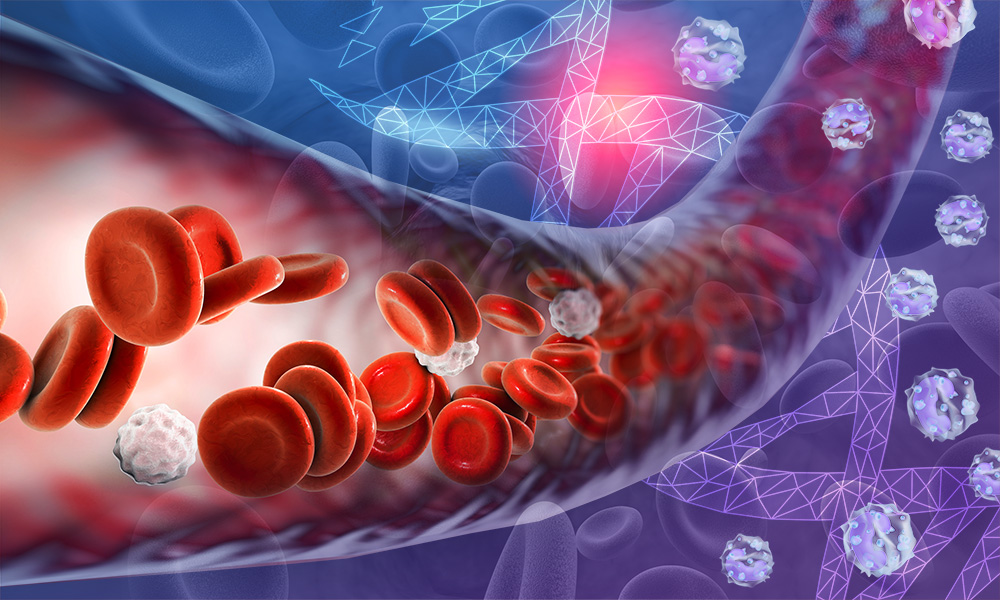The longitudinal dynamics and natural history of clonal haematopoiesis
Nature 9 June 2022
10.1038/s41586-022-04785-z
Researchers have uncovered how genetic mutations hijack the production of blood cells in different periods of life, and how these changes relate to the development of age-related diseases, including blood cancer.

The new study, published in Nature, represents the first time that the lifelong impact of genetic mutations on cell growth dynamics has been explored. The work was carried out by scientists at the Wellcome Sanger Institute, the Cambridge Stem Cell Institute, EMBL’s European Bioinformatics Institute (EMBL-EBI), and collaborators.
All human cells acquire genetic changes in their DNA throughout life, known as somatic mutations. A specific subset of these mutations drives cells to multiply. This is common in blood stem cells, and results in the growth of populations of cells with identical mutations known as ‘clones’. This process, termed ‘clonal haematopoiesis’, becomes ubiquitous with age and is a risk factor for developing blood cancer and other age-related conditions.
“For the first time we have been able to use genomic analysis to understand the past, present, and future of mutant clones in our blood,” said Moritz Gerstung, co-senior author of the study, from EMBL’s European Bioinformatics Institute and the German Cancer Research Centre (DKFZ). “These data show that the dynamics of blood clones are surprisingly predictable over a period of years, but also highlight that they change over a lifetime in ways we don’t understand yet.”
To understand how and when clonal haematopoiesis develops, how it is influenced by ageing, and how it relates to disease, the researchers tracked nearly 700 blood cell clones from 385 individuals aged over 55. Participants donated regular blood samples for up to 16 years.
DNA sequencing of blood samples showed that over 90% of clones expanded at a stable exponential rate over the period studied. The rate of growth was primarily influenced by the nature of the mutated gene in each clone.
“Our findings reveal how acquired genetic DNA changes hijack blood formation during our lifetimes, with normal blood stem cells competing against cells with pre-leukaemia mutations,” said Margarete Fabre, PhD student at the Wellcome Sanger Institute and the University of Cambridge. “Understanding why some mutations prevail in youth and others in old age could help us find ways to maintain the health and diversity of our blood cells.”
“Our work shows that mutations not only grow at different rates but also appear at different times during adult life, and that there is a good association between higher growth rates and progression to myeloid cancers,” concluded Jose Guilherme Coelho Peres de Almeida, previously a PhD student at EMBL-EBI, now a Postdoc at the Champalimaud Centre for the Unknown. “This provides not only insights into the fundamental biology of somatic evolution but can also be helpful in the clinic.”
This is a short version of a press release published on the Wellcome Sanger Institute website.
This research was funded by the Leukaemia and Lymphoma Society, Rising Tide Foundation for Clinical Cancer Research, Wellcome Trust and Cancer Research UK.
Patients were part of the SardiNIA longitudinal cohort study supported by the National Institute of Health and the European Union’s Horizon 2020 Research and Innovation Programme.
Nature 9 June 2022
10.1038/s41586-022-04785-z
Looking for past print editions of EMBLetc.? Browse our archive, going back 20 years.
EMBLetc. archive